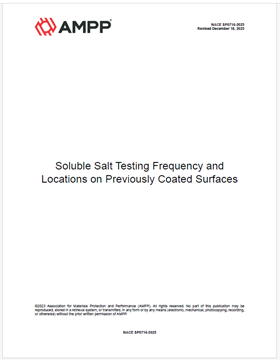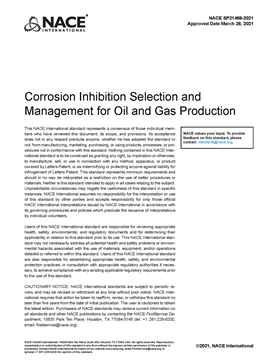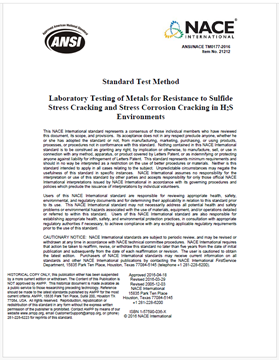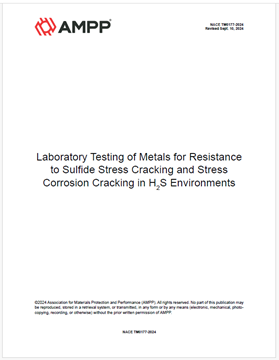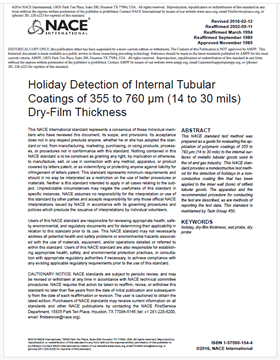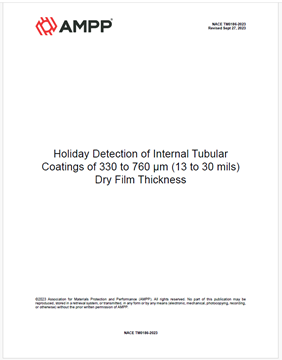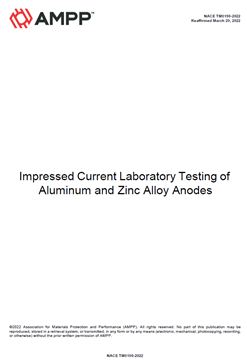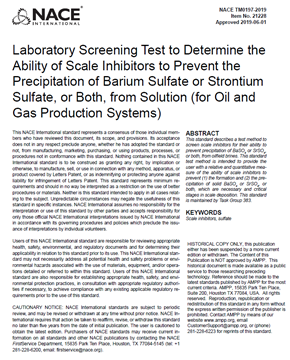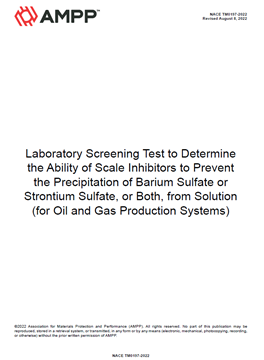Search
Oil and Gas
View as
Sort by
Display
per page
NACE SP0716-2023, Soluble Salt Testing Frequency and Locations on Previously Coated Surfaces
Product Number:
NACE SP0716-2023
Publication Date:
2023
$109.00
NACE SP0775-2023, Preparation, Installation, Analysis, and Interpretation of Corrosion Coupons in Hydrocarbon Operations
Product Number:
NACE SP0775-2023
Publication Date:
2023
$109.00
NACE SP21469-2021, Corrosion Inhibition Selection and Management for Oil and Gas Production
Product Number:
SP21469-2021
Publication Date:
2021
$109.00
NACE TM0102-2023, Measurement of Protective Coating Electrical Conductance on Underground Pipelines
Product Number:
NACE TM0102-2023
Publication Date:
2023
$109.00
NACE TM0177-2005, Laboratory Testing of Metals for Resistance to Sulfide Stress Cracking and Stress Corrosion Cracking in H2S Environments
Product Number:
NACE TM0177-2005
Publication Date:
2005
$179.00
NACE TM0177-2016, Laboratory Testing of Metals for Resistance to Sulfide Stress Cracking and Stress Corrosion Cracking in H2S Environments
Product Number:
21212-SG
Publication Date:
2016
$179.00
NACE TM0177-2024, Laboratory Testing of Metals for Resistance to Sulfide Stress Cracking and Stress Corrosion Cracking in H2S Environments
Product Number:
NACE TM0177-2024
Publication Date:
2024
$109.00
NACE TM0186-2016, Holiday Detection of Internal Tubular Coatings of 355 to 760 μm (14 to 30 mils) Dry-Film Thickness
Product Number:
21218-SG
Publication Date:
2016
$179.00
NACE TM0186-2023, Holiday Detection of Internal Tubular Coatings of 330 to 760 µm (13 to 30 mils) Dry Film Thickness
Product Number:
NACE TM0186-2023
Publication Date:
2023
$109.00
NACE TM0190-2022, Impressed Current Laboratory Testing of Aluminum and Zinc Alloy Anodes
Product Number:
NACE TM0190-2022
Publication Date:
2022
$109.00
NACE TM0197-2019, Laboratory Screening Test to Determine the Ability of Scale Inhibitors to Prevent the Precipitation of Barium Sulfate or Strontium Sulfate, or Both, from Solution (for Oil and Gas Production Systems)
Product Number:
21228-2019
Publication Date:
2019
$179.00
NACE TM0197-2022, Laboratory Screening Test to Determine the Ability of Scale Inhibitors to Prevent the Precipitation of Barium Sulfate or Strontium Sulfate, or Both, from Solution (for Oil and Gas Production Systems)
Product Number:
NACE TM0197-2022
Publication Date:
2022
$109.00

